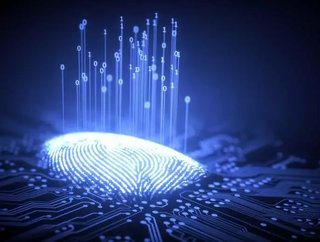Understanding the biometric opportunity

Algorithms currently shape many of our decisions; just think suggested reading, recommended items or Twitter’s “who to follow”, for example. Developments in AI make our digital lives easier and in fact, AI is now so firmly embedded in our interactions that we take for granted the ease at which we can be quickly authenticated and our journeys personalised. Far from being apprehensive of developments that capture and use behavioural and preferential data, our appetite for technology that speeds up and enriches our interactions grows as quickly as the technology itself evolves. Much is written about biometric authentication in the consumer space, particularly in financial services, but this is a single use case in a vast landscape of potential applications.
The passive monitoring - of our interests, preferences, patterns or behaviours - permeates our lives; what we do, when we do it, where we do it and how we do it, both online and in the physical world. We may not even be aware of the continual, invisible monitoring to keep us in an authenticated state for whichever application we’re in. This is in addition to active biometric verification, namely facial or voice authentication, which can be captured in multiple scenarios and contexts to create richer profiles of a user. Whatever the approach, AI is enabling the rapid assembly and interpretation of vast amounts of data that is used to predict behaviours, enhance the experience or authenticate the individual.
Organisations are beginning to see the potential of not just deploying biometrics to gather valuable customer data or quickly and safely authenticate a user, but also the potential of integrating it within the workplace too. And the real value comes into play when you can deploy a model that spans any channel, so that whomever the user, in whichever channel they’re using, the experience is consistent, cohesive and built with security in mind.
See also:
Beyond the smartphone
One would be forgiven for assuming that biometrics are limited to smartphones, there is that much noise around mobiles. But many organisations today are moving to a server-side authentication model, so that the user may be authenticated regardless of the device that they use or channel in which they engage with their supplier. By moving the authentication process to the cloud, whereby a pseudonymised digital template is stored in the cloud and serves as the single true version upon which all other authentication requests are compared, means that regardless of the channel - web, mobile, call centre or physical location, the user can be authenticated against their template.
Put simply, a user - whether a customer, partner, employee or whomever the organisation needs to authenticate - can enrol for voice authentication for example using a mobile, but as the voice template is stored centrally, they can be authenticated through any channel using a microphone. This could be utilised across an organisation in myriad ways; such as deploying voice-activated physical access or requiring voice authentication to approve an internal workflow, authenticating customers calling a helpline or authorising access to a conference call of a confidential nature.
The same applies to facial authentication, whereby users enrol once with a selfie photo via one channel, and this digital face template is used to authenticate them across any channel with a camera, for whichever purpose the authentication is required. Again, the use cases reach far and wide; using facial authentication to access restricted physical areas, applying a ‘step-up’ selfie challenge to confirm changes to an external website or confidential document, or a webcam selfie for partners to access a portal, are just some of the examples.
And finally, behavioural authentication can also be deployed way beyond the smartphone. In fact, by storing a digital template of a user’s behaviour centrally rather than locally, this allows an organisation to monitor behaviour across any physical device that is connected - such as a mouse, keyboard, keypad, touchpad, manual entry system and more. Any deviation from their standard behaviour could invoke a secondary step-up authentication request - such as a selfie or voice challenge - for optimum safety and security. Similarly, if the behaviour is well within your comfort level, security can be stepped-down.
Enterprise-configured risk parameters
The benefit of deploying a centralised Biometric Identity as-a-Service (or BIDaaS) platform is that an organisation can configure individual risk thresholds depending on the nature of the transaction or process. Whereas passwords and PINs are binary yes/no decisions, an organisation is now at liberty to authenticate against the digital template but set its own risk levels and configurations. The more sensitive or high-risk the scenario, the higher the threshold can be set, and all requests return an in-session risk-based assessment of a user’s authenticity. The lower the risk, the more an organisation can apply a step-down approach to security.
Convenience, security, consistency
A BIDaaS approach ultimately means that your customers, partners, suppliers or employees can be authenticated however they interact with you, in a secure and consistent way. This omnichannel deployment is not only simpler and more familiar for the user (one enrolment for multiple channels) but is faster and more cost effective than delivering a channel-by-channel approach. More importantly, by placing your critical assets or those of your stakeholders under biometric lock and key, yesterday’s threats, such as stolen phones or laptops, are not the cause for concern that they once were.
We are moving towards a time where our physical characteristics are truly replacing the passwords and PINs of yesterday. By embracing a secure cloud authentication module, you can factor in the biometric technologies and channels not just of today, but on tomorrow’s horizon.
Andrius Sutas, CEO and Co-Founder, AimBrain
- Top 100 Women 2024: Robyn Denholm, Tesla - No. 8AI & Machine Learning
- Top 100 Women 2024: Safra Catz, Oracle - No. 7Digital Transformation
- Advancing AI in Retail with Pick N Pay's Leon Van NiekerkAI & Machine Learning
- OpenText’s Muhi Majzoub: Engineering Platform Growth with AIEnterprise IT






